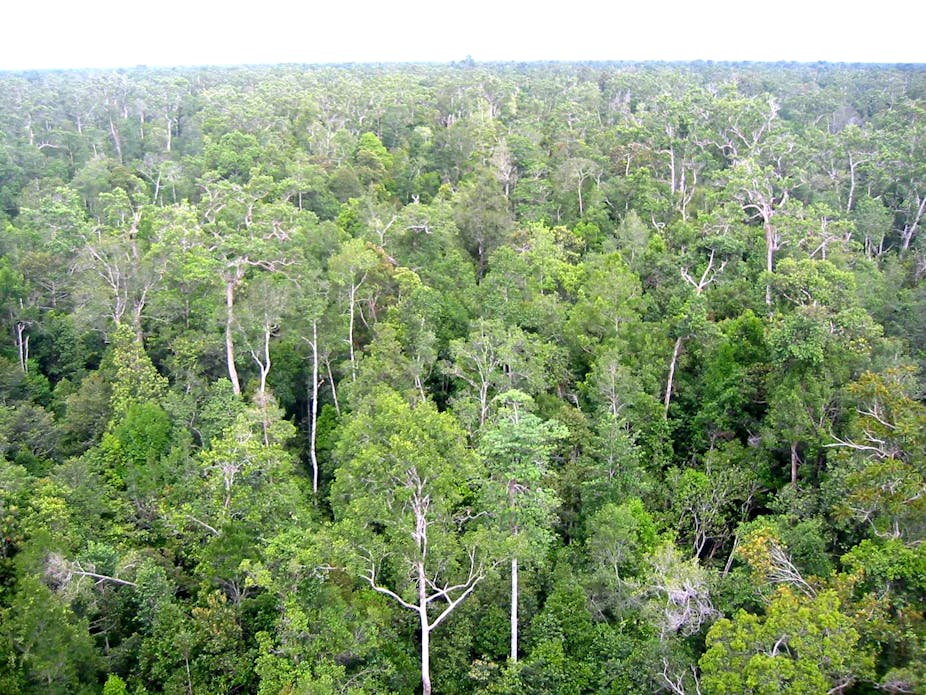Rising temperatures are linked to a decrease in carbon dioxide (CO2) absorption by tropical forests, according to a 50-year study published today.
Greenhouse gases, such as CO2, contribute to global warming, sea level rises and extreme weather events, previous studies have shown.
Forests absorb CO2 during photosynthesis and release it during respiration.
The new NASA-lead study, conducted with the CSIRO and published in the journal Proceedings of the National Academy of Sciences, builds on a growing body of evidence that suggests global warming will accelerate as time goes by.
The researchers analysed data on global atmospheric carbon dioxide concentration and climate variability between 1959 and 2011, which included El Niño years characterised by higher temperatures and lower average rainfalls.
The researchers found that a tropical land surface temperature rise of one degree Celsius led to an average extra 3.5 Petagrams of CO2 being pushed into the atmosphere per year. A Petagram is a billion tonnes.
“Tropical forests are carbon sinks but when it gets hotter, they become less efficient in absorbing CO2 from the atmosphere. We are learning very clearly that tropical forests do not like to be any hotter than they are. As soon as you increase the temperature, they perform less well as carbon sinks,” said study co-author Pep Canadell, Executive Officer of the Global Carbon Project.
“Many processes involved in this response are the same as what is known as the carbon-climate feedback, which it is thought will lead to an acceleration of carbon emissions from vegetation and soils and into the atmosphere under future climate change.”
Exacerbating the problem
Steve Sherwood, Director of the Climate Change Research Centre at the University of New South Wales, said the findings were important.
“The signals they see are a good way to test climate models that include an interactive carbon cycle. Also, their findings help explain the well-known, natural, year-to-year variations in the rate of carbon dioxide buildup, and in so doing, they increase the likelihood that global warming in the future will cause more of the carbon dioxide now stored in tropical plants and soils to go into the atmosphere,” said Professor Sherwood, who was not involved in the study.
“This will exacerbate our own emissions of this gas, and therefore will make human-caused climate change and ocean acidification a bit worse than these problems would otherwise have been. This is not a new conclusion, but their results increase our confidence in it.”

